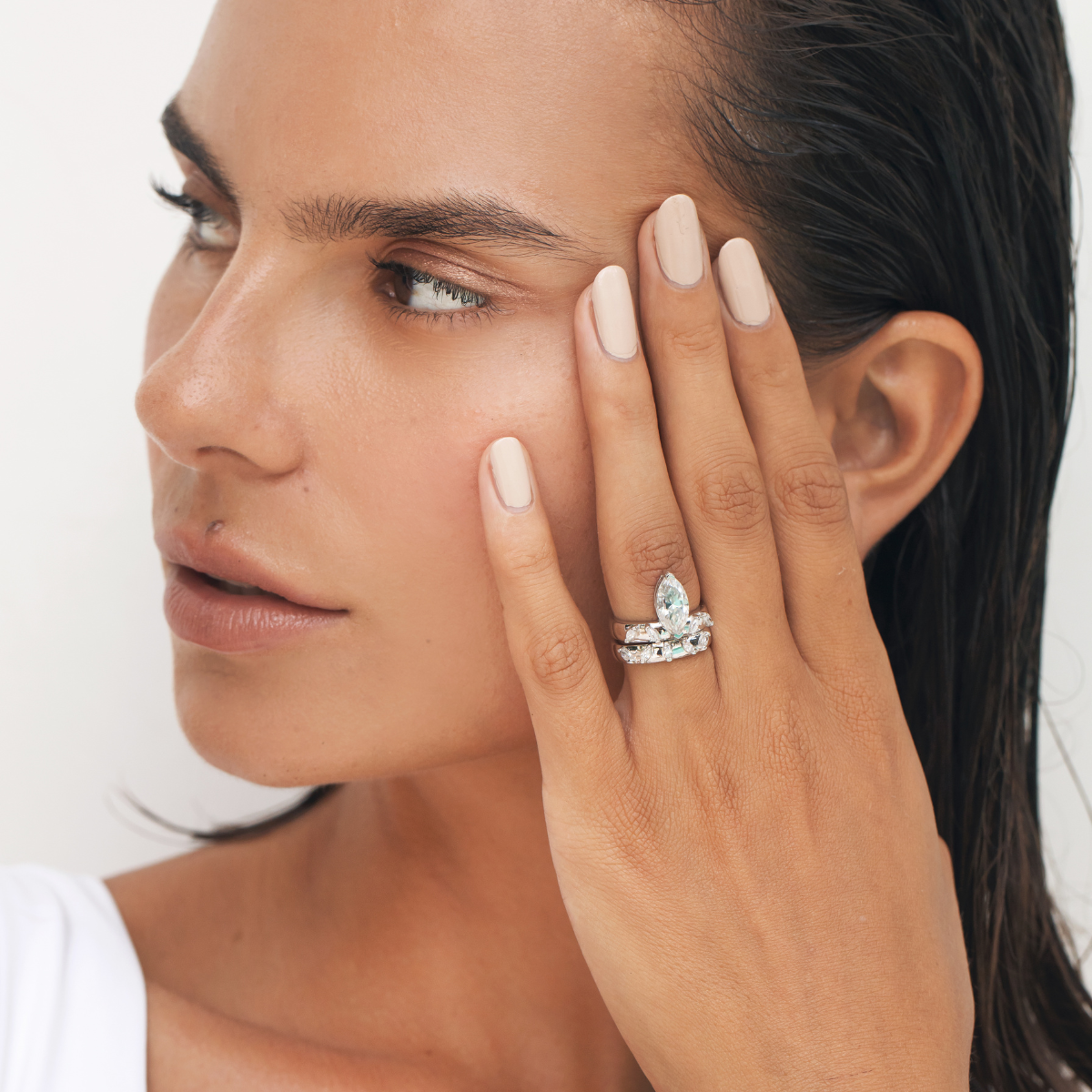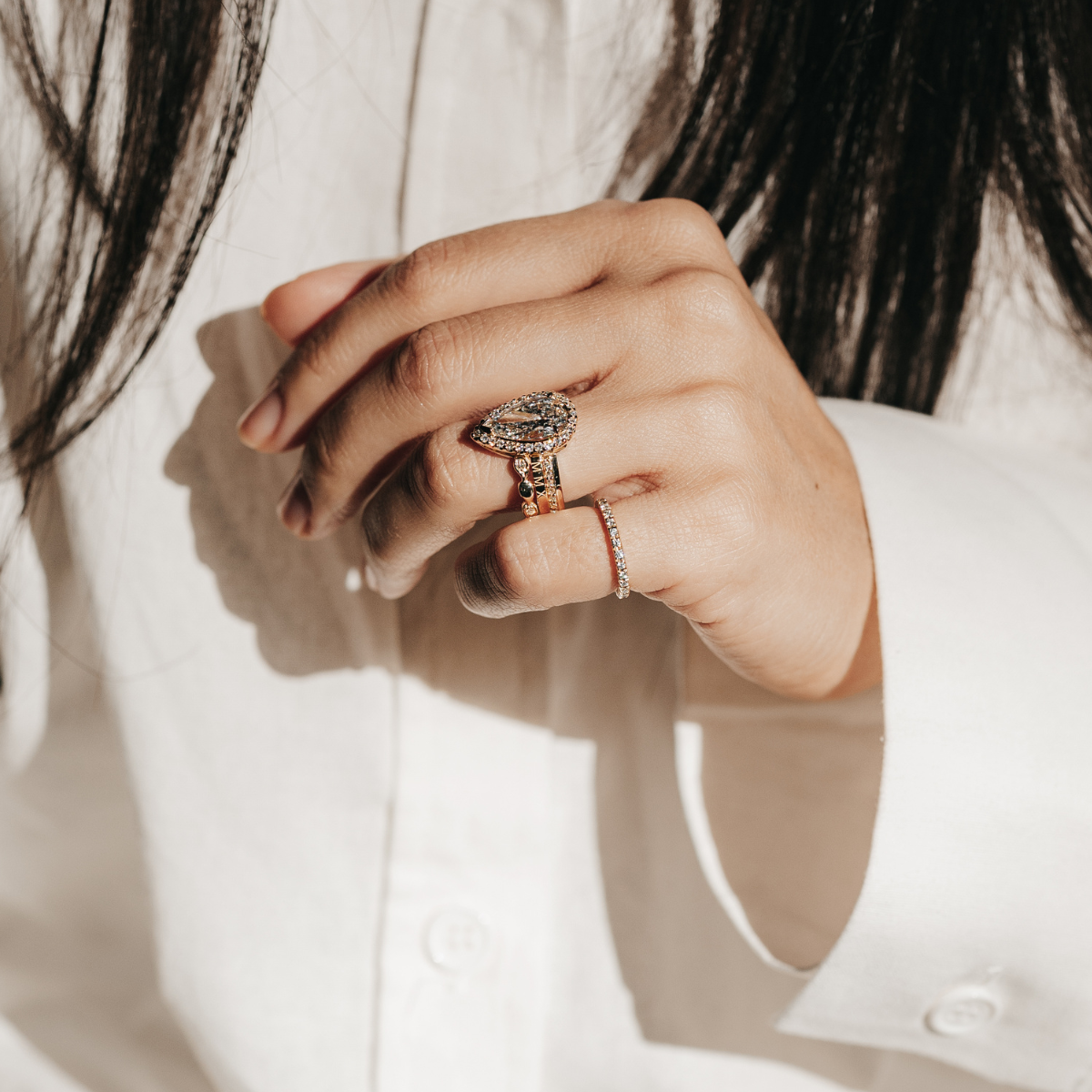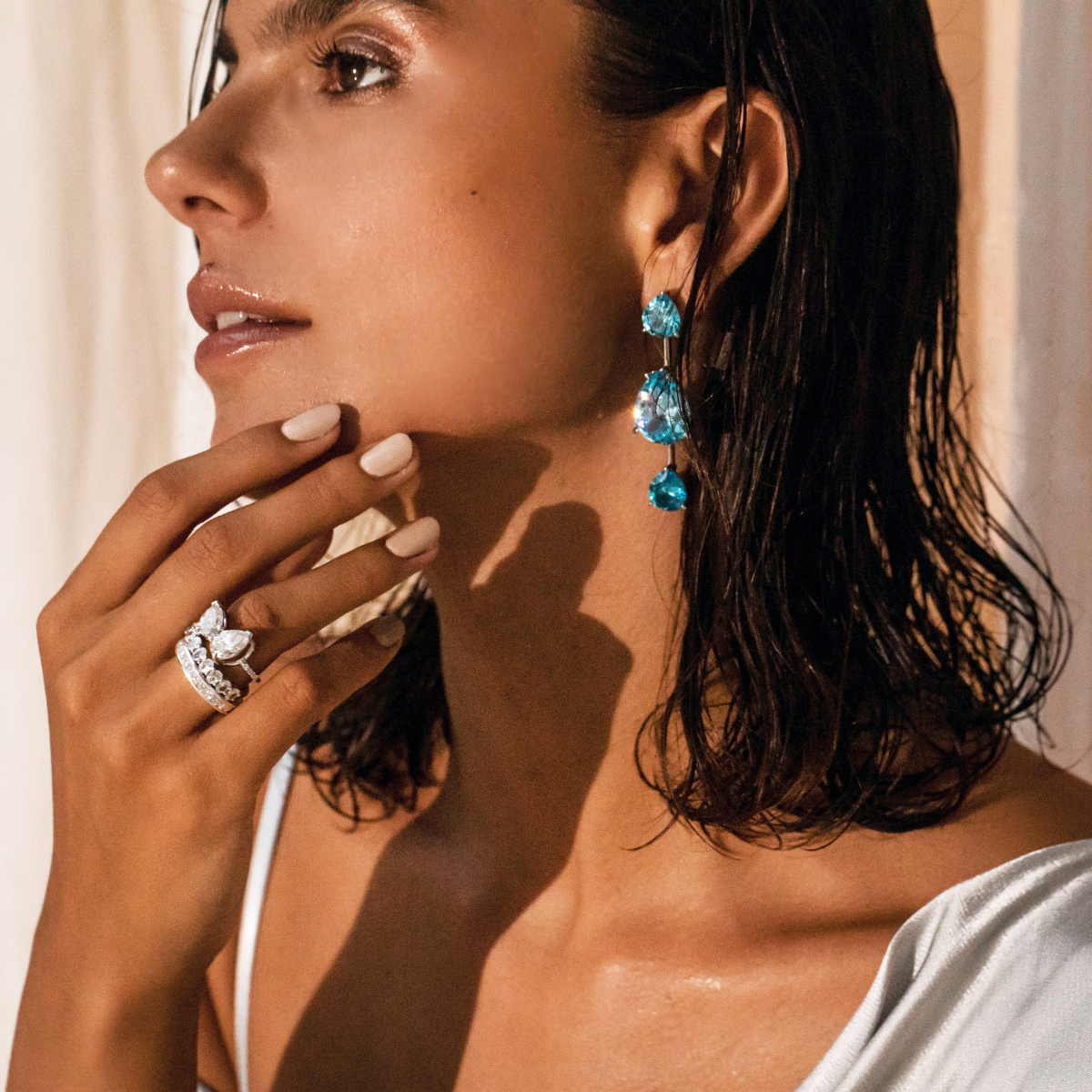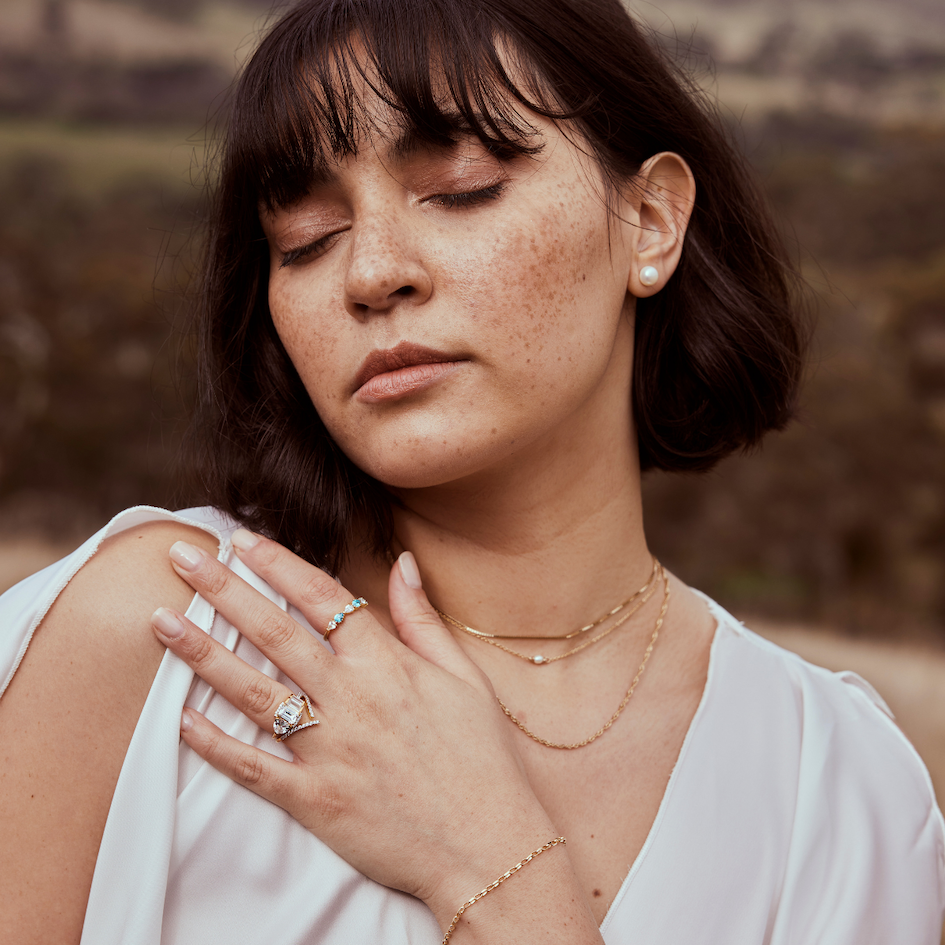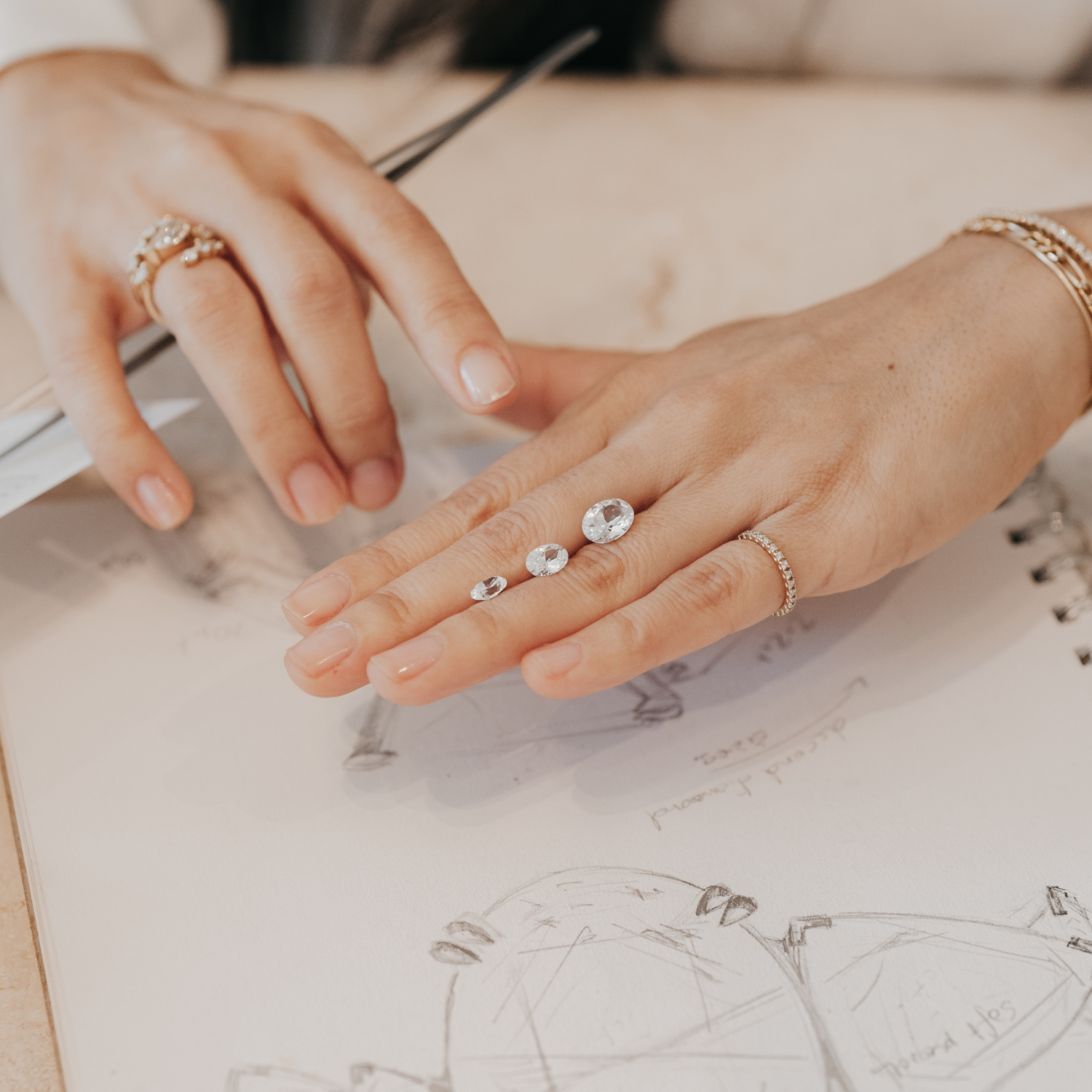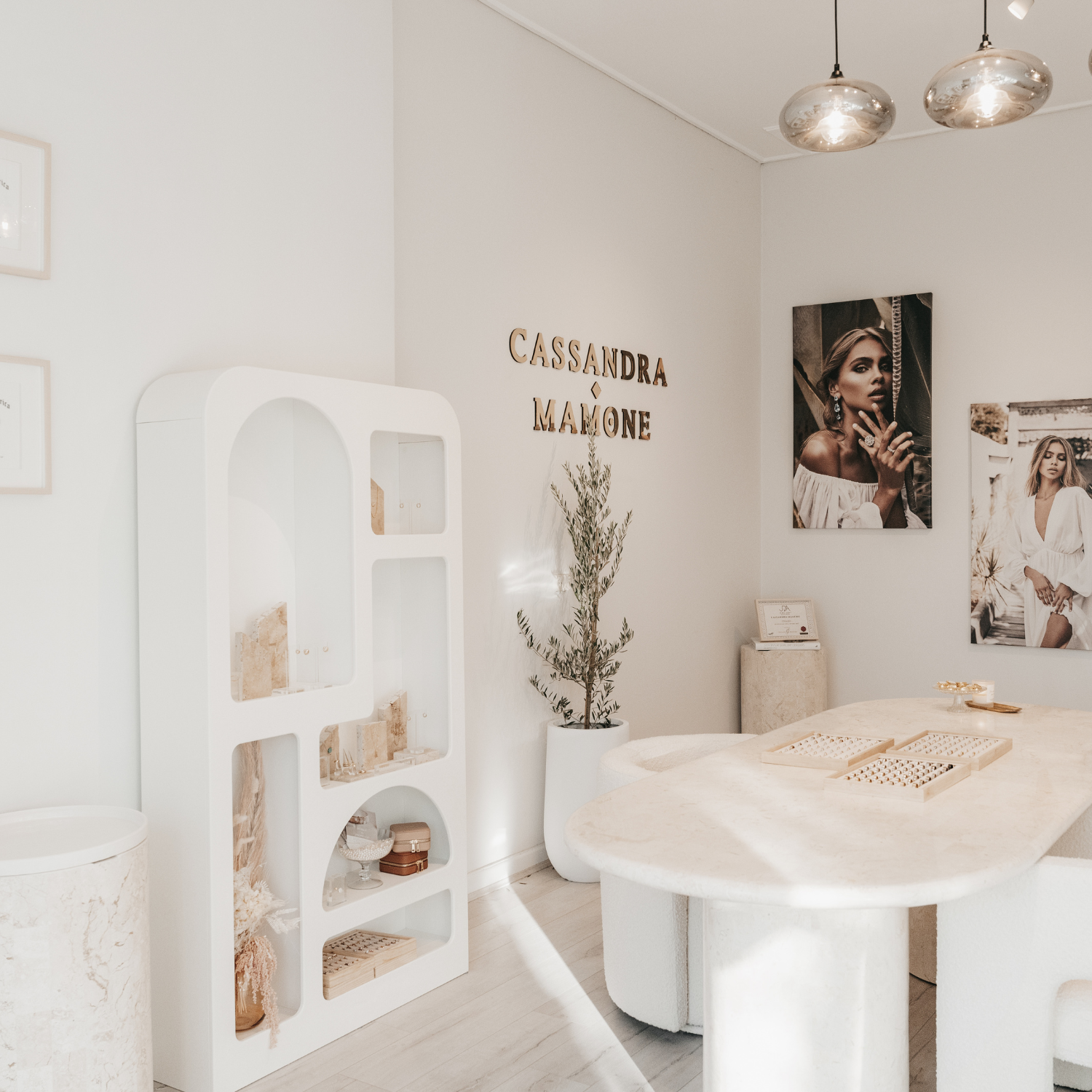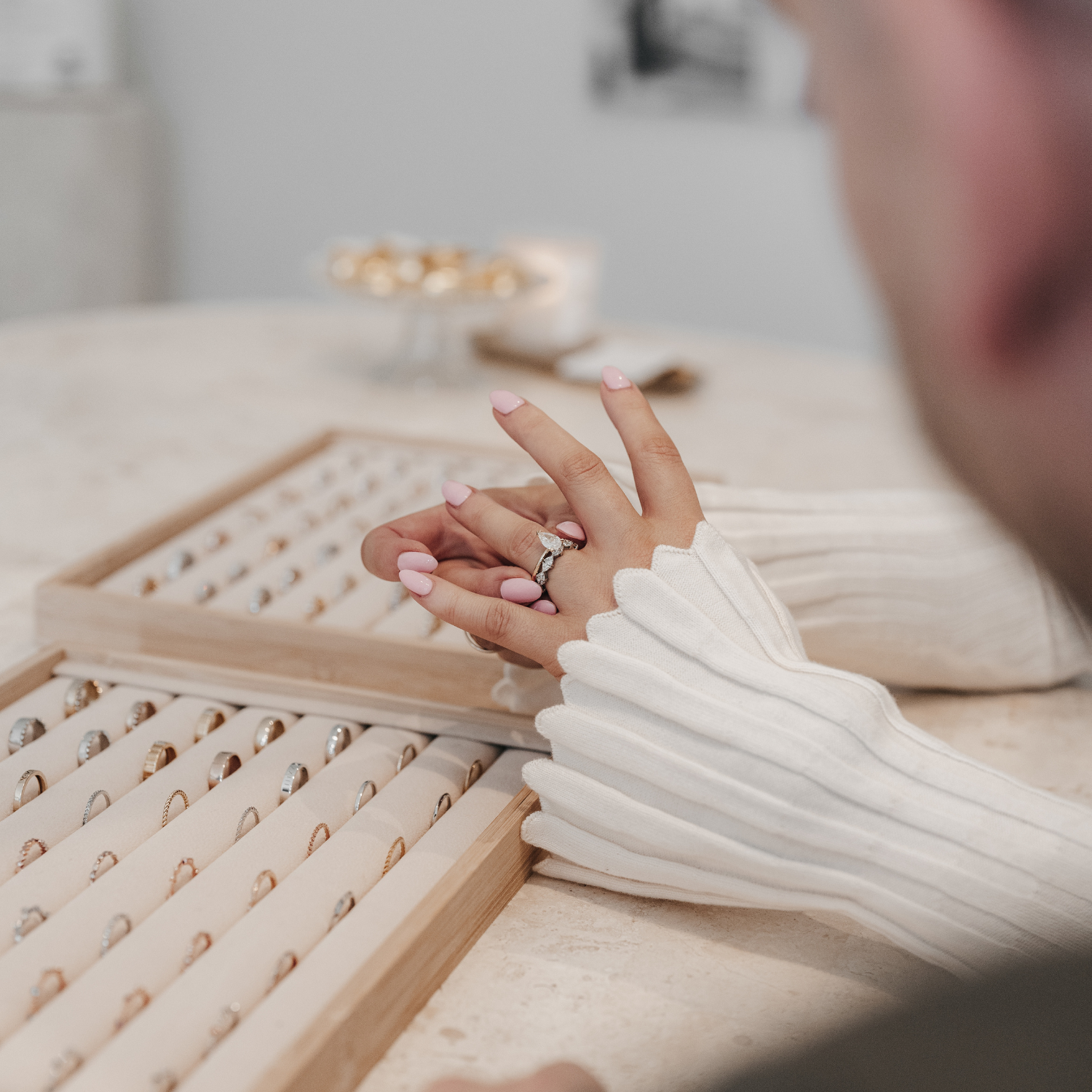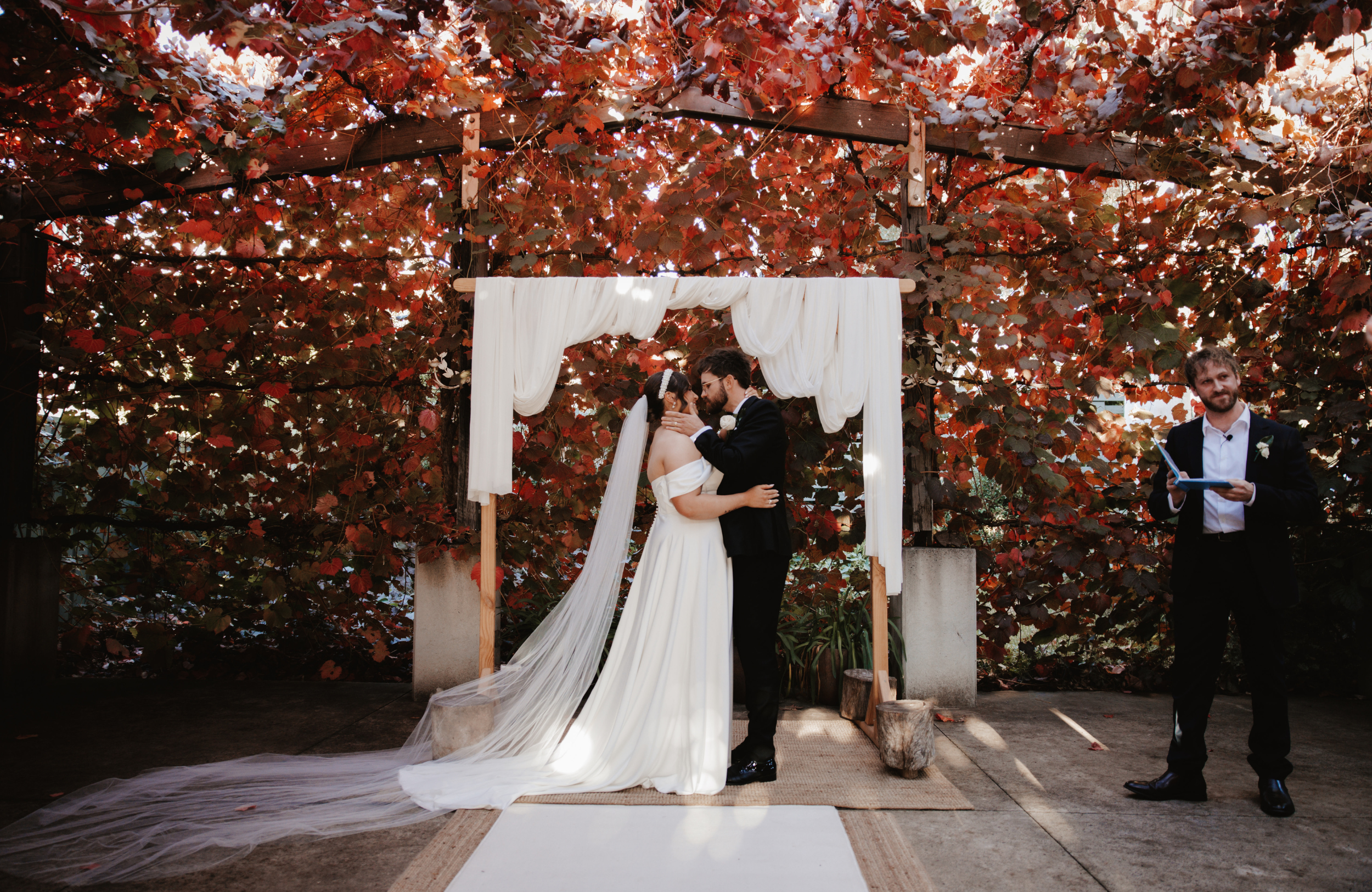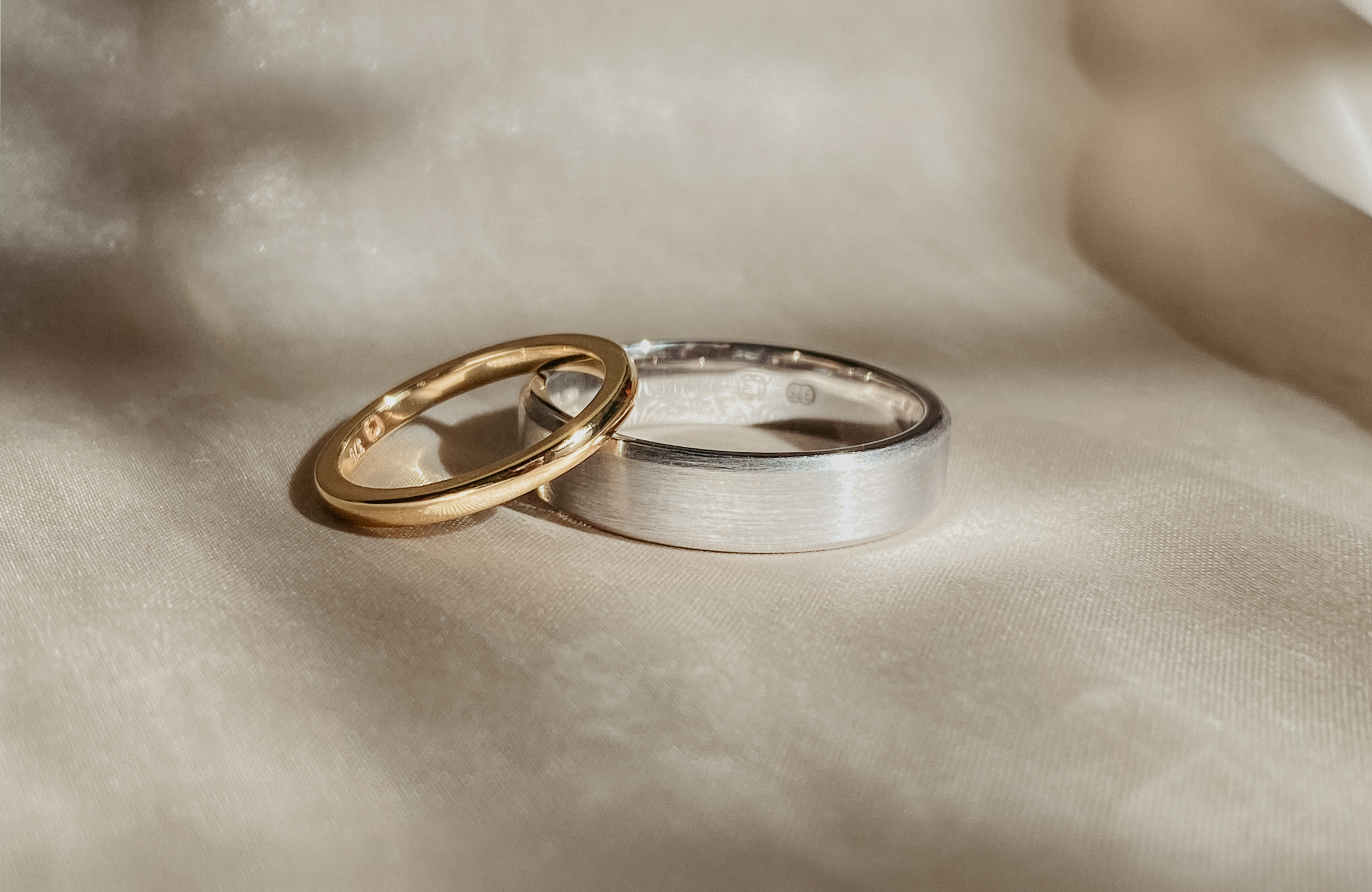
A GUIDE TO PRECIOUS METALS
Jewellery is both a personal and considered investment. That is why it is important to choose the ring metal that's right for you and for your lifestyle and to ensure that you can wear your special piece for a lifetime.
When it comes to buying jewellery, there are many different options to choose from. From the type of metal to the carat weight, there are a lot of factors to consider. In this post, we will explore the differences between 9ct and 18ct gold, as well as yellow gold, rose gold, white gold and platinum jewellery. We've put together a guide so you can choose the best metal for you.

Carat
A gold carat is the measure of the purity of gold, with pure gold being 24 carats. Gold has long been used in jewellery compared to other precious metals. However, 24ct gold jewellery is not considered strong enough for everyday wear as pure gold is soft and highly malleable. Gold is frequently alloyed with other metals to increase its strength, durability and colour. At Cassandra Mamone, we offer 9ct or 18ct gold jewellery for everyday wear as solid gold is tarnish resistant and hypoallergenic.

9ct vs. 18ct gold
The main difference between 9ct and 18ct gold is the amount of pure gold in the metal. 9ct gold contains 37.5% pure gold, while 18ct gold contains 75% pure gold. This means that 18ct gold is more valuable and expensive than 9ct gold.

Yellow Gold
Yellow gold is the most traditional and classic type of gold used in jewellery. It is made by mixing pure gold with copper and silver to create a warm, yellow hue. Yellow gold is a popular choice for engagement rings, wedding bands, and other timeless pieces.

Rose Gold
Rose gold, also known as pink gold, is a mixture of pure gold and copper. The copper gives the metal a warm, pinkish hue that has become increasingly popular in recent years. Rose gold is often used in modern, trendy jewellery designs.

White Gold
White gold is made by mixing pure gold with other metals such as palladium, and silver to create a white or greyish hue. It is often used in engagement rings and other fine jewellery pieces, as it has a similar appearance to platinum but is less expensive. White gold is often plated with a thin layer of rhodium to enhance its whiteness and durability. This rhodium plating can wear off over time and require re-plating to maintain its appearance.

Platinum
Platinum is a rare and valuable metal that is often used in high-end jewellery. It is a dense, heavy metal that is resistant to tarnishing and corrosion. Platinum is more expensive than gold, but it is also more durable and long-lasting and a great choice for a gent's wedding band.
Which metal should you choose?
The type of metal you choose for your jewellery will depend on your personal style, budget, and the occasion for which you are buying the piece. Yellow gold is a classic choice that will never go out of style, while rose gold is a trendy option for those who want something more modern. White gold and platinum are both great choices for engagement rings and other fine jewellery pieces, as they have a timeless, elegant look.
When it comes to the carat weight, 18ct gold is a more valuable and expensive option than 9ct gold. However, 9ct gold is a more affordable option that still provides the look and feel of gold jewellery.
Whether you prefer yellow gold, rose gold, white gold, or platinum, there are many different options to choose from when it comes to jewellery. The key is to find a metal and carat weight that suits your personal style and budget. By understanding the differences between 9ct and 18ct gold, as well as the different types of gold and platinum, you can make an informed decision when it comes to buying jewellery that you will love and cherish for years to come.

If you have any questions or need any help in choosing your metal, please get in touch with us here.

